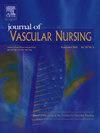Assessment of the pressure distribution of powered and non-powered hospital mattresses to reduce pressure injury risk
IF 1.2
Q3 NURSING
引用次数: 0
Abstract
Objective
Pressure injuries (PIs) are a burden because they cause pain, prolong hospital stays, and increase mortality. Especially for individuals who are bedridden, the support surface is one of the main factors influencing the PI risk. Therefore, we quantitatively assessed the interface pressures of four hospital mattresses aiming to reduce the risk of PI of our patients by an optimized mattress selection.
Methods
We assessed the pressure distribution and median peak pressure on the sacrum and trochanter in supine, semi-fowler and lateral position with a pressure-measuring mat on four different mattresses using eight healthy subjects.
Results
The observed pressure distribution varied significantly between mattresses. Despite a subject and body position dependent peak pressure, the relative performance of the mattresses was consistent across subjects. In the Semi-fowler position, median peak pressure was lowest on the Powered_FIS mattress (25.7 mmHg), followed by Non-powered_foam (35.6 mmHg), Powered_air (43.5 mmHg) in continuous mode, and highest on the Non-powered_hybrid mattress (55.5 mmHg).
Conclusion
Pressure measurements can be used as an objective tool that can assist the process of selecting a mattress. Extra attention should be focused on assessing hybrid mattresses as the pressure distribution can be considerably worse in the reactive state when compared to a dedicated reactive mattress.
评估有动力与无动力医院床垫的压力分布以降低压力伤害风险
目的压伤(PIs)是一种负担,因为它会引起疼痛,延长住院时间,并增加死亡率。特别是对于卧床者,支撑面是影响PI风险的主要因素之一。因此,我们定量评估了四种医院床垫的界面压力,旨在通过优化床垫选择来降低患者PI的风险。方法对8名健康受试者在仰卧位、半俯卧位和侧卧位时骶骨和粗隆的压力分布和中位峰值压力进行测量。结果不同床垫间压力分布差异显著。尽管峰值压力与受试者和身体位置有关,但床垫的相对性能在受试者中是一致的。在半卧位中,Powered_FIS床垫的中位峰值压力最低(25.7 mmHg),其次是Non-powered_foam (35.6 mmHg), Powered_air (43.5 mmHg), Non-powered_hybrid床垫的中位峰值压力最高(55.5 mmHg)。结论压力测量可作为辅助床垫选择的客观工具。应特别注意评估混合床垫,因为与专用反应床垫相比,混合床垫在反应状态下的压力分布要差得多。
本文章由计算机程序翻译,如有差异,请以英文原文为准。
求助全文
约1分钟内获得全文
求助全文
来源期刊

Journal of Vascular Nursing
NURSING-
CiteScore
1.40
自引率
0.00%
发文量
33
期刊介绍:
Journal of Vascular Nursing provides clinical information regarding aortic and peripheral aneurysms, upper and lower extremity arterial disease, acute and chronic venous disease, and more. Original, peer-reviewed articles present descriptions, etiologies, diagnostic procedures, medical and surgical treatment and nursing implications of vascular system disorders.
 求助内容:
求助内容: 应助结果提醒方式:
应助结果提醒方式:


